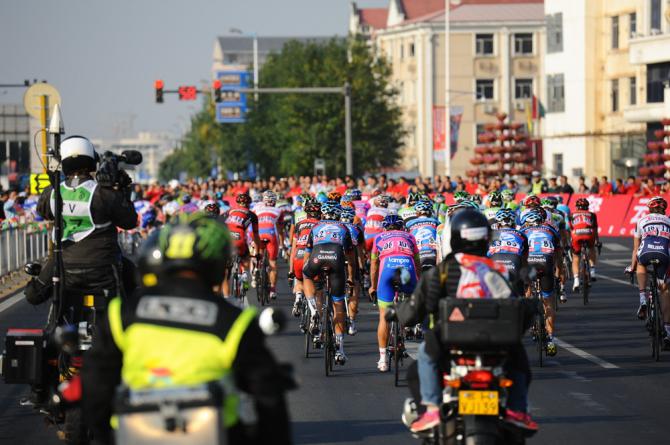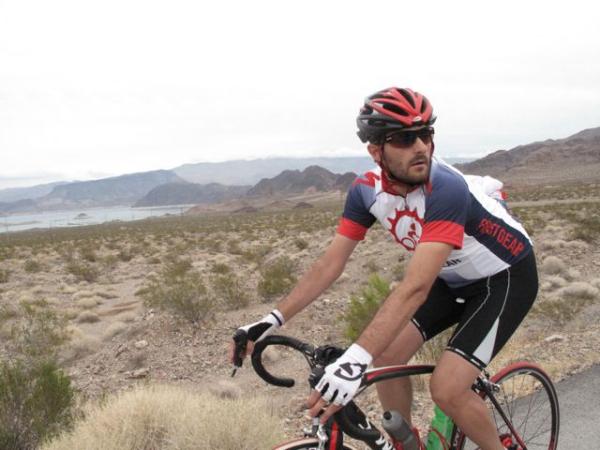Tramadol abuse in the cycling peloton
Pain killer abuse on WADA’s radar as MPCC push for change

It is not on the World Anti-Doping Agency’s (WADA) list of banned substances but tramadol, a pain-killing opioid, has once again made it onto the agency’s Monitored List for 2014. It’s been there since 2012, and with riders, team doctors and the MPCC all stating their fears of the substance’s abuse in the peloton, WADA has also confirmed that a ‘significant’ number of tests have shown traces of the drug.
What does it mean for the peloton and what effects could the drug provide?
Cyclingnews spoke to one high profile rider in the peloton about tramadol. The rider, who did not want to be named, told the website that, “It’s not illegal but it is on the screening list [WADA’s Monitoring List]. That said, some teams won’t give it out while some do. Some riders are out there training on it though.”
That final sentence could be the most alarming. If riders are effectively taking pain killers during training then they’re generating a similar effect provided by amphetamines, one team physician has told Cyclingnews.
Prentice Steffen MD is the head physician at Garmin-Sharp. The part-time team doctor, part-time emergency room physician was a major leader when cycling introduced a no-needle policy in the peloton two seasons ago. He has petitioned the MPCC, who have in turn requested that WADA add Tramadol to their banned list.
The MPCC (Movement for Credible Cycling) is made up of professional cycling teams and was created in 2007. Not every WorldTour or ProContinental team are members but since February of this year the movement, led by Steffen’s guidance on the issue, has lobbied for tramadol to be banned.
“The MPCC has gotten behind my request to ask WADA to fast track it from the Monitor List to the banned list. We got a letter back from WADA saying that they were going to continue to watch for it and that they were getting a lot of positive tests for it, particularly in cyclists,” Steffen told Cyclingnews in between night shifts in a United States emergency room.
Get The Leadout Newsletter
The latest race content, interviews, features, reviews and expert buying guides, direct to your inbox!
“I think it’s a big problem. It’s an opioid. There’s morphine and there’s heroin and codeine but it’s a bit of a different opioid. It was originally designed to be a bit of a low grade non-mind altering opioid for chronic pain, a bit like methadone in that you don’t get a big high like shooting heroin but it’s definitely an opioid and for an athlete in a sport that’s painful everyday, it takes the edge off it and makes it less unpleasant. It’s addictive too.”
Tramadol certainly is not in the leagues of blood doping or EPO in terms of performance boosting, but it has been used within the peloton for a number of years. One rider who raced throughout most of the 2000s told Cyclingnews that they had used the drug to help with inflammations and injury.
For example, if a rider has tendonitis during a grand tour and he is racing through the final mountain stages before three days of flat racing a team doctor may choose a short course of the drug until the mountains are out of the way. At which point the rider can recover naturally on the flat roads.
“We’ve had a lot of discussions about it with many of the riders on the team and Jonathan [Vaughters] and I. We arrived at what we think is a reasonable and sensible approach, which is that it’s not banned and it’s a drug like any other so it has approved usages, but all medication is to be used to its appropriate indications. So we’ve said that a hard day in the saddle is not an appropriate occasion for the use of tramadol. But if they have a painful condition and pain medication is appropriate, we think that then it could be reasonable. I don’t like it, I think we can get by without it.”
Asked if he believed that riders in the professional peloton were abusing the use of tramadol in order to boost their performances, Steffen gave an unwaveringly clear response.
“Absolutely. I know it’s a problem. It’s not a big performance enhancer but it could make the difference of a fraction of a per cent. It’s like nothing compared to EPO or blood doping but it’s more on the side of cortico-steroids. If blood doping is a ten then it’s a two, maybe.
“I can imagine it being used for training. Anything that makes an intense effort or suffering more tolerable is going to give you a training advantage.”
Next move WADA
WADA’s stance appears clear. In a letter sent from Dr Olivier Rabin, Science Director at the agency, to Roger Legeay, the head of the MPCC, Raban admitted that, ”tramadol has been included in the Monitoring Program since 2012. The number of samples containing tramadol is significant and the very large majority of them originate from cyclists. These figures, however, are the result of less than 2 years of monitoring.”
The letter was sent on September 11 of this year, with Cyclingnews recently obtaining a copy.
Raban ends his letter by stating that, “tramadol remains on the list of priorities for the List Expert Group actions and will be further reviewed in 2014.”
Daniel Benson was the Editor in Chief at Cyclingnews.com between 2008 and 2022. Based in the UK, he joined the Cyclingnews team in 2008 as the site's first UK-based Managing Editor. In that time, he reported on over a dozen editions of the Tour de France, several World Championships, the Tour Down Under, Spring Classics, and the London 2012 Olympic Games. With the help of the excellent editorial team, he ran the coverage on Cyclingnews and has interviewed leading figures in the sport including UCI Presidents and Tour de France winners.
